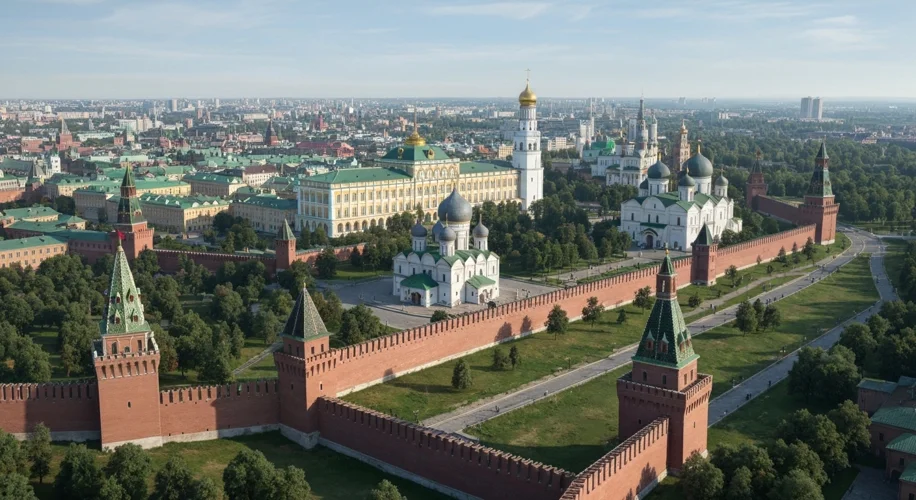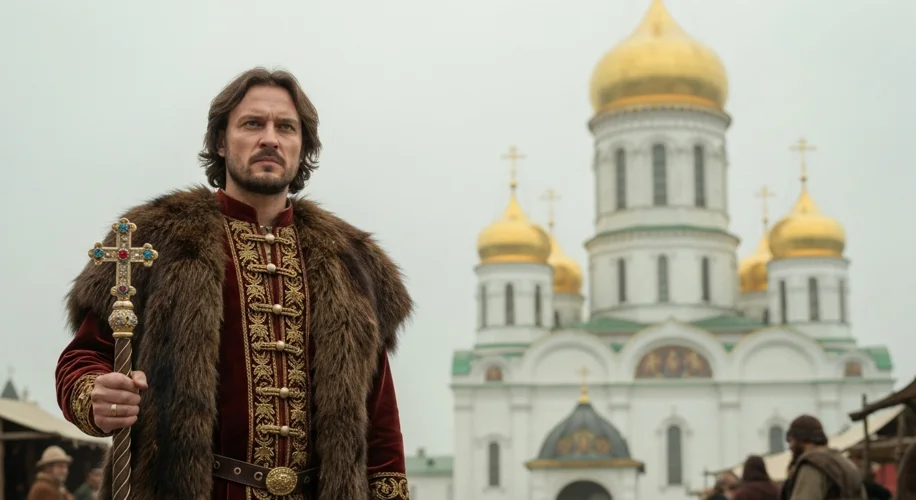The vast expanse of Eastern Europe, a land of dense forests, mighty rivers, and enduring spirits, was once a mosaic of squabbling principalities. For centuries after the shattering of Kyivan Rus’ by the Mongol invasions, the land now known as Russia was fragmented, its peoples scattered under the yoke of the Golden Horde. Yet, from this crucible of division and foreign domination, a new power began to stir, a power that would ultimately gather these scattered lands and forge them into a centralized state – Muscovy.
Imagine a small, unremarkable principality nestled in the heart of the forested north, far from the ancient glories of Kyiv. This was Moscow in the 13th century. It was a land of mud-brick buildings, hardy peasants, and a shrewd, ambitious ruling class. But it possessed a geographical advantage: its location on several navigable rivers and its relative remoteness from the direct brunt of Mongol raids allowed it to survive and, crucially, to endure.
The Golden Horde, a formidable empire born from Genghis Khan’s conquests, cast a long shadow over the Rus’ lands. For over two centuries, these principalities paid tribute, their princes often traveling to the Horde’s capital, Sarai, to beg for investiture, a humiliating ritual that underscored their subservience. It was within this complex relationship that the princes of Moscow began to forge their destiny. They proved to be remarkably adept at navigating the treacherous currents of Tatar politics, often acting as tax collectors for the Horde, thereby gaining both revenue and a degree of authority over their neighbors.
One of the most pivotal figures in this early ascent was Ivan I Kalita, or “John Moneybag” (reigned 1325–1340). Kalita understood that power wasn’t just about military might; it was about wealth and legitimacy. He skillfully accumulated wealth through his role as tax collector and, crucially, secured the blessing of the Orthodox Church. The Metropolitan of Kiev, the highest religious authority in Rus’, moved his seat to Moscow in 1325, transforming the small duchy into the spiritual heart of Russian Orthodoxy. This move was a masterstroke, imbuing Moscow with a divine aura and solidifying its claim to leadership.

The 14th century was a period of consolidation. While the Golden Horde still held sway, internal strife weakened its grip. Moscow, under princes like Dmitry Donskoy, began to push back. In 1380, Dmitry famously led a coalition of Rus’ princes to victory against the Golden Horde at the Battle of Kulikovo. Though the Horde would recover and exact brutal revenge, the battle was a watershed moment. It demonstrated that the Mongols were not invincible and instilled a sense of shared identity and purpose among the Rus’ peoples. Moscow had become the standard-bearer of resistance.
The final blow to Mongol dominance came in the late 15th century under Ivan III, known as Ivan the Great (reigned 1462–1505). Ivan III was a shrewd diplomat and a ruthless conqueror. He systematically absorbed neighboring principalities, including the powerful city-state of Novgorod, through a combination of diplomacy, purchase, and outright military force. In 1480, he faced the Tatar Khan Akhmat at the Ugra River. After a tense standoff, the Tatars withdrew, marking the end of the “Tatar Yoke” and the true liberation of the Rus’ lands.
Ivan III also began to adopt the trappings of Byzantine imperial power, styling himself “Sovereign of All Rus’.” He married Sophia Palaiologina, niece of the last Byzantine Emperor, and adopted the double-headed eagle as his coat of arms. Moscow was now consciously positioning itself as the “Third Rome,” the successor to Byzantium and the defender of Orthodox Christianity. The foundations of a centralized, autocratic Russian state were firmly laid.

The consequences of Muscovy’s rise were profound. It led to the creation of a vast, unified state that would, over the ensuing centuries, expand across Siberia, dominate Eastern Europe, and become a major world power. The centralized system, with its autocratic tradition rooted in both Mongol and Byzantine influences, would shape Russia’s political and social landscape for centuries to come. The gathering of the Russian lands under Moscow was not merely a territorial expansion; it was the birth of a new identity, a new state, and a new destiny.
The story of Muscovy’s rise is a testament to the power of strategic vision, political acumen, and the enduring resilience of a people determined to forge their own path, even from the ashes of devastation. It’s a narrative of how a small duchy, through cunning, faith, and sheer will, transformed itself from a tributary state into the nucleus of an empire that would forever alter the course of history.

